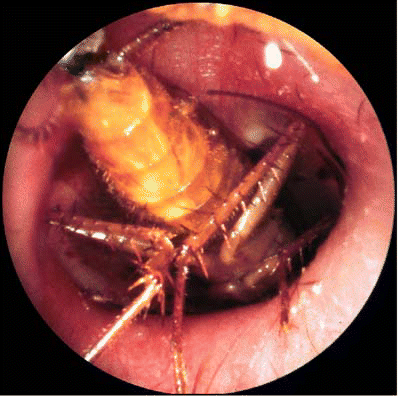Note: The American Broncho-Esophagological Association (ABEA) awards an annual Presidential Citation for Excellence in Foreign Body Removal. If you have a particularly informative and interesting anecdote, submit it to Dr. Dana Thompson at Dana.Thompson@cchmc.org.
Explore This Issue
April 2007World’s Tallest Man Saves China Dolphins
BEIJING-The long arms of the world’s tallest man reached in and saved two dolphins by pulling out plastic from their stomachs, state media and an aquarium official said. The dolphins got sick after nibbling on plastic from the edge of their pool at an aquarium in Liaoning province. Attempts to use surgical instruments to remove the plastic failed because the dolphins’ stomachs contracted in response to the instruments. Veterinarians then decided to ask for help from Bao Xishun, a 7-foot-9 Mongolian herdsman with 41.7-inch arms. Chen Lujun, manager of Royal Jidi Ocean World, said Mr Bao was successful and the dolphins were recovering nicely…

Although a dolphin is unlikely to show up in an otolaryngologist’s examination room, foreign bodies are often found in patients’ (usually children’s) orifices. Objects commonly include toys including doll accessories, beads (in New Orleans, Mardi Gras beads are common), batteries, erasers, crayons, stones, and folded paper, as well as biologic materials such as insects or seeds. ENToday asked a number of seasoned otolaryngologists to tell us their stories of the most unusual or interesting things they had removed from patients’ noses, ears, or throats. Although most experienced practitioners will be well familiar with what to keep in mind in these situations, we also include a few reminders (see sidebar).
Hook, Line, and Sinker? For Real
Bob Miller [ENToday editorial board chair] and I were residents together at UCLA. We were called down to the emergency room to see an adolescent who had been on a fishing trip. He had a piece of nylon monofilament line coming out of his mouth. I asked him, What’s going on?
He said that when they were done fishing they had to get back in the car to leave. When they were driving in the car, he wanted to take apart his fishing tackle and cut the line. Because he didn’t have a scissors or knife, he put the lead sinker in his mouth and used his teeth to try to cut it off the fishing line. The car hit a bump and jolted him and he swallowed. When we saw the X-ray it showed the fish hook in his piriform sinus, the sinker was in his proximal esophagus, and the line was coming out of his mouth. In the emergency room, someone had tried to pull the line out of his mouth and it hurt him because it had already got stuck in there. There he was, holding this line, because if he swallowed any further, the line would have disappeared down his esophagus.
Leave a Reply